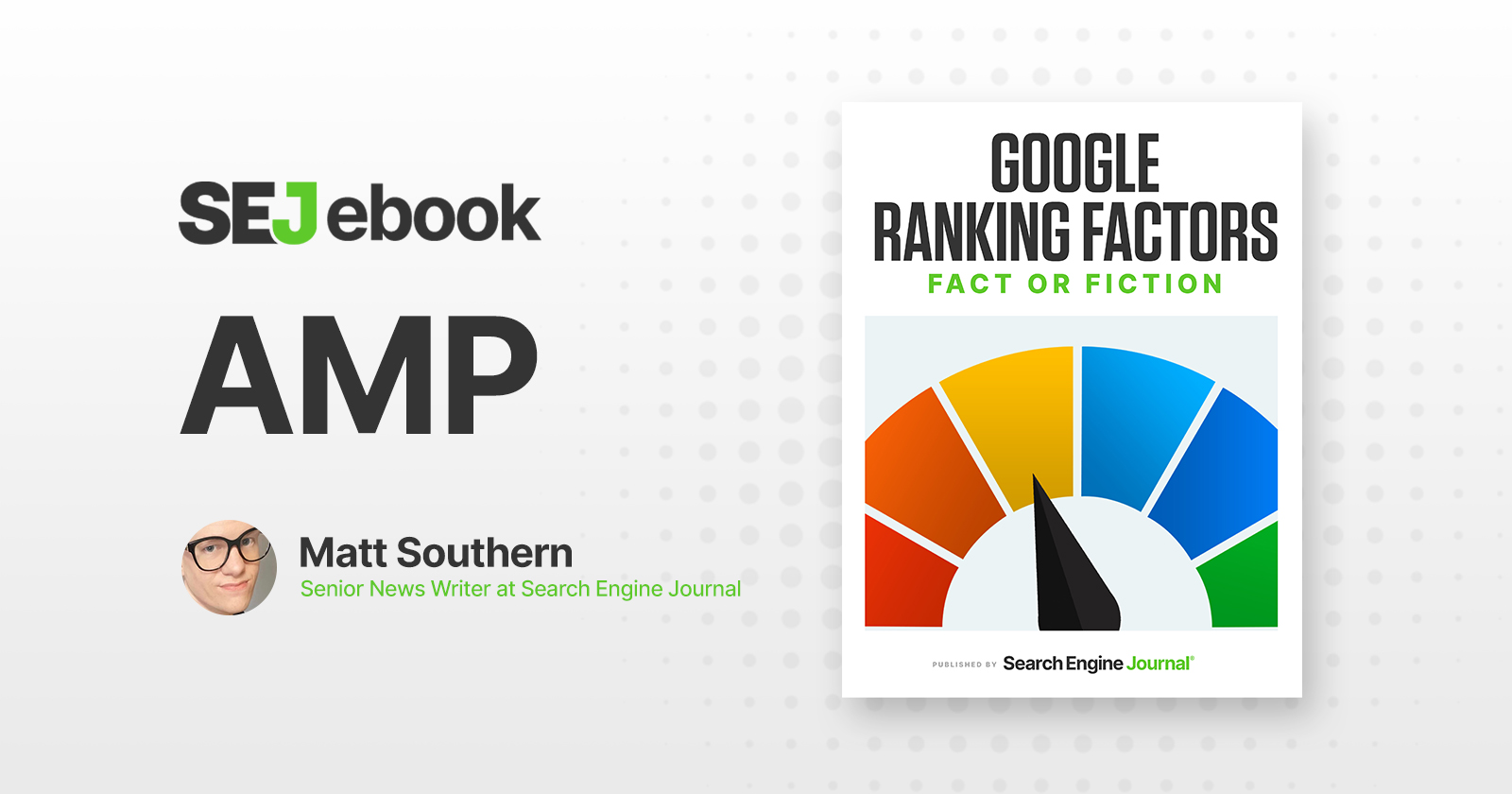
AMP is an HTML framework that helps desktop-optimized sites deliver ultra-fast mobile versions of webpages.
AMP is created by Google, which has led to claims it gives pages a ranking advantage in mobile search over non-AMP pages.
Google has debunked those claims and said AMP is not a ranking factor.
Case closed, right?
It’s easy to say AMP doesn’t give a site an advantage in rankings and leave it at that.
But we can’t write it off and ignore the impact it has on other elements that do matter for SEO.
Here’s what the evidence says about AMP’s impact on search results and how it’s connected to other ranking factors.
The Claim: AMP is a Ranking Factor
The claim here is straightforward – AMP gives pages a ranking boost in Google’s search results.
AMP has come up in discussions about ranking factors ever since Google launched the technology in 2018.
Why?
One reason AMP is thought to be a ranking factor is because Google has a stake in its success as a technology.
Google is responsible for the creation of AMP, and actively encourages using it as part of a larger effort to speed up the web.
In theory, Google could increase the adoption rate of AMP by turning it into a ranking signal.
The ranking boost would be like a reward for using Google’s new technology. Of course, that would be unfair to any site not using AMP.
If Google used AMP to rank search results, you could argue it would be forcing sites to use its technology in order to stay relevant.
Thankfully, that’s not how search works.
But AMP isn’t irrelevant to SEO by any stretch.
Let’s look at the evidence on how AMP impacts SEO.
The Evidence Against AMP as a Ranking Factor
This one is pretty easy – Google has confirmed that AMP is not a ranking factor. Again. And again.
In Google’s Advanced SEO guide, the company says it ranks all pages using the same signals regardless of how the page was developed:
“While AMP itself isn’t a ranking factor, speed is a ranking factor for Google Search. Google Search applies the same standard to all pages, regardless of the technology used to build the page.”
This quote touches on something we mentioned earlier about AMP impacting other things, like page speed, which are confirmed ranking factors.
Sites that use AMP can potentially benefit from these other signals.
As of July 2018, page speed has been a ranking factor for mobile searches.
Because AMP is designed to load pages instantly, it can help sites send stronger ranking signals in terms of mobile page speed.
This has the potential to lead to better rankings. However, sites can generate the same signals without AMP.
Core Web Vitals
Google’s Core Web Vitals became ranking factors when the page experience algorithm update was rolled out in June 2021.
Leading up to the launch of the update, Google’s communication to site owners has always been that AMP can help with achieving ideal Core Web Vitals scores.
“There is a high likelihood that AMP pages will meet the thresholds. AMP is about delivering high quality, user-first experiences; its initial design goals are closely aligned with what Core Web Vitals measure today.
This means that sites built using AMP likely can easily meet Web Vitals thresholds.”
Google presented data showing that AMP domains were five times more likely to pass Core Web Vitals compared to non-AMP domains.
Passing Google’s Core Web Vitals thresholds has the potential to improve a site’s search rankings.
Again, as with the page speed ranking boost, this can be achieved without AMP.
Other SEO Benefits of AMP
AMP used to carry with it various perks that could enhance how a page appears in search results.
For example, Google’s Top Stories carousel, which appears at the top of search results when looking for news stories, used to only accept AMP pages.
Top Stories eligibility was a ranking advantage unique to AMP for a period of time.
That changed in June 2021 with the rollout of the Page Experience update, which now makes it possible for non-AMP pages to appear in the Top Stories carousel.
Lastly, another unique feature of AMP pages was that a lightning bolt icon appeared in search results to indicate which pages offered faster experiences.
Google has done away with that icon. Now, AMP pages are indistinguishable from regular pages in search results.
AMP as a Ranking Factor: Our Verdict
Google has confirmed multiple times that AMP is not a Google ranking factor.
Further, it no longer has unique advantages that could have an impact on click-through rate, such as a special icon and Top Stories exclusivity.
AMP can positively impact other ranking factors (e.g., speed), but it is not a factor on its own.
Featured image: Paulo Bobita/






